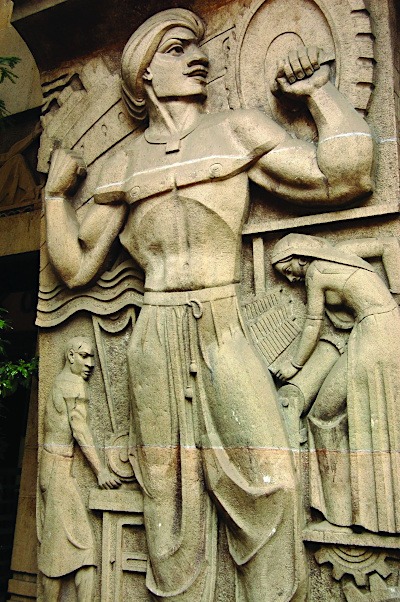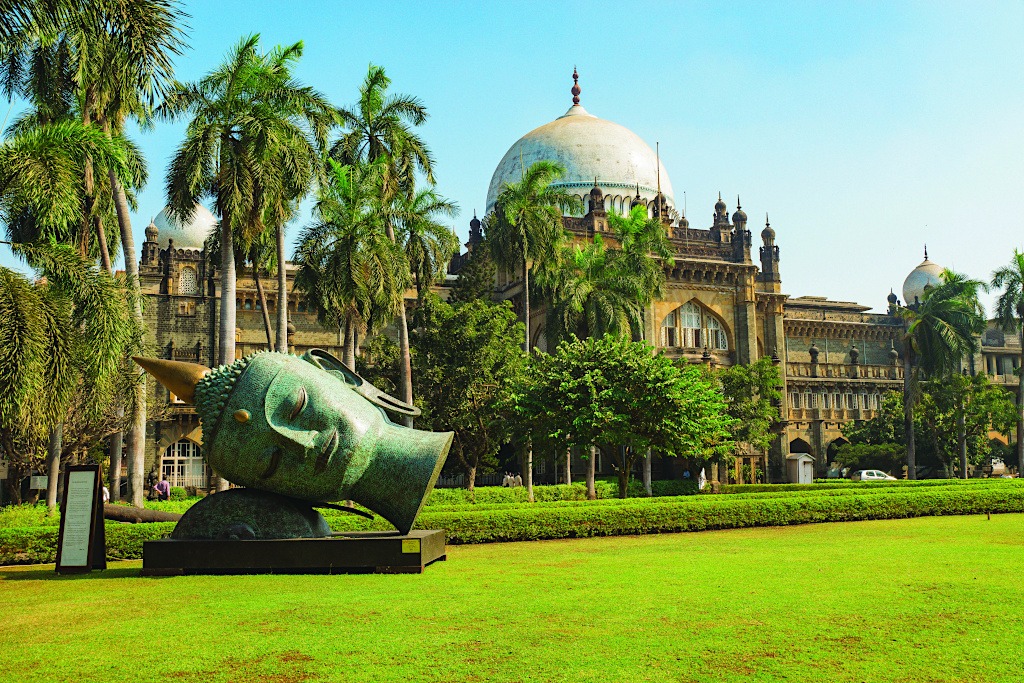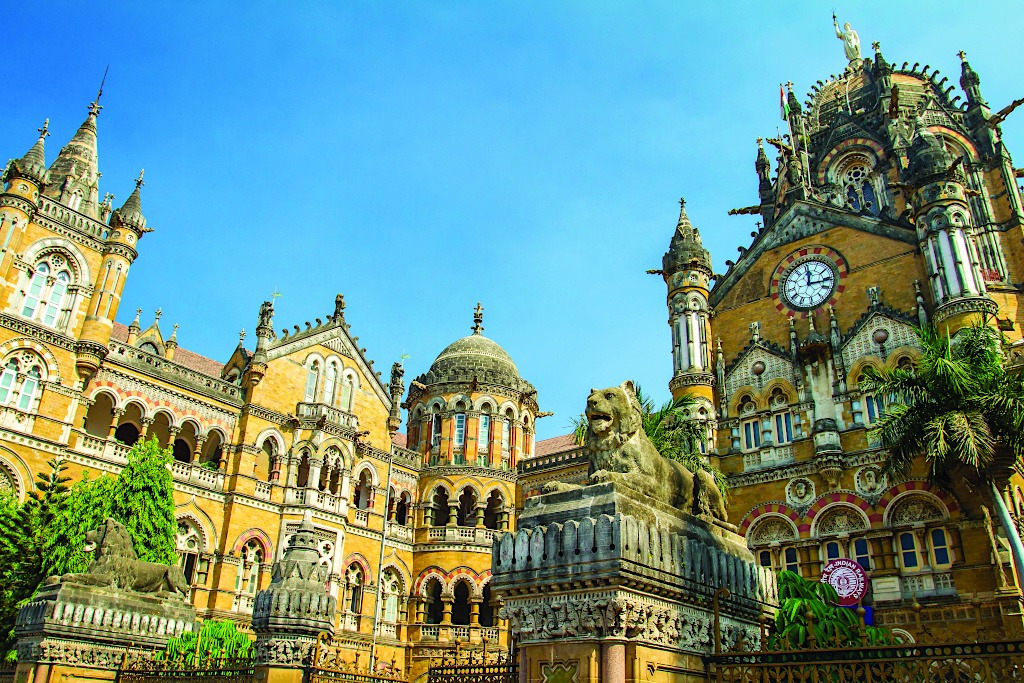

Art Deco Carving in Mumbai
Photo: BasPhoto
Any heritage hotel of this calibre is likely to have numerous facts and fictions about its place in history. One popular myth about the Taj is that the architect approved the plans while on holiday without noticing which direction it faced, hence the hotel was built back-to-front. Not true. The grand entry courtyard where guests would once arrive by horse-drawn carriage faced inland and guestrooms faced the sea, but when the Taj needed to adapt to changing demands by adding a swimming pool, the hotel layout was reversed. A new sea-facing entrance was created not to correct an earlier mistake, but to allow for the courtyard to become an urban oasis with a huge pool surrounded by sun loungers and lush palm trees.
The hotel’s legendary status was cemented further in the 1960s. John Lennon and Yoko Ono famously stayed in the Rajput suite for five days without once leaving, and fellow Beatle, George Harrison took sitar lessons from Indian music legend Ravi Shankar in what’s now the Ravi Shankar suite. It was during the 60s that the Taj became a bit of a party palace thanks to Blow Up, India’s first international-style discotheque.
A 22-story tower annex was added in the 1970s, but in truth nothing can compare to the palatial ambience of the original heritage wing. Even if you can’t afford to stay, it’s worth visiting for an indulgent cocktail. Reputedly created in 1933 for two American sailors who wanted something special to celebrate the end of Prohibition back home, the signature cocktail ‘From The Harbour Since 1933’ combines gin, fruit juices, and a flaming shot of chartreuse liqueur.
Another nearby hotel that’s rich with nostalgia is Abode Bombay. This intimate boutique hotel occupies part of a heritage building in the historic Colaba neighborhood. Its décor has a 1920s vibe, achieved by the use of salvaged materials, including furniture and objects sourced from local vintage markets like Chor Bazaar (also known as ‘Thieves Market’) and
cushions crafted from vintage saris. A belief in environmental and social responsibility prevails throughout: copper jugs of reverse osmosis water are provided in every room instead of wasteful bottled water, massages are offered in conjunction with a local school for the blind, and airport transfers are provided by Mumbai’s only female staffed taxi service.
Breakfast is served in the airy lobby-lounge-café area and includes masala chai poured from retro enamel tea pots, plus daily changing local specialities such as anda bhurji (scrambled eggs with sautéed onions, chillies and spices). The basic rooms are a great value and come with en-suite wetrooms and shared toilets, or splurge on the spacious deluxe suite with a
vintage roll-top bathtub.
The surrounding area has many exceptional landmarks built during the colonial era in an Indo-Saracenic style. Formally known as the Victoria Terminus, the Chhatrapati Shivaji Maharaj Terminus was built in 1887 to commemorate the Golden Jubilee of Queen Victoria. An architectural marvel, this palace of a railway station is a UNESCO World Heritage Site, and is said to be the most photographed building in India after the Taj Mahal.


CSMVS Museum
Photo: Hari Mahidhar
Another must-see is the Chhatrapati Shivaji Maharaj Vastu Sangrahalaya (CSMVS). Like the Victoria Terminus, it was renamed in the 1990s after the warrior king and founder of the Maratha Empire, Chhatrapati Shivaji Maharaj, but it’s often called by its former name, the Prince of Wales Museum. The Prince of Wales (the future King George V) laid its foundation stone in 1905, and work was completed in 1915. Considered the city’s best museum, it houses a fascinating collection of art, archaeology, and natural history.
A rare slice of greenery in this southern part of Mumbai is Oval Maidan. As well as being a great place to watch locals play a game of cricket, this large recreational ground is like an architectural front line separating Victorian from Art Deco. To the right of Oval Maidan are grand Victorian-era buildings, including Bombay High Court, Mumbai University, and the striking Rajabai Clock Tower, which was modelled after London’s Big Ben. In contrast, the road to the left is lined with elegant Art Deco apartment buildings, as is nearby Marine Parade—this sweeping promenade beside the Arabian Sea is known as the Queen’s Necklace because when illuminated at night it resembles a string of pearls. Mumbai is in fact second only to Miami in terms of its Art Deco heritage, with over 300 buildings currently categorised as Art Deco, including the iconic Regal Cinema.


